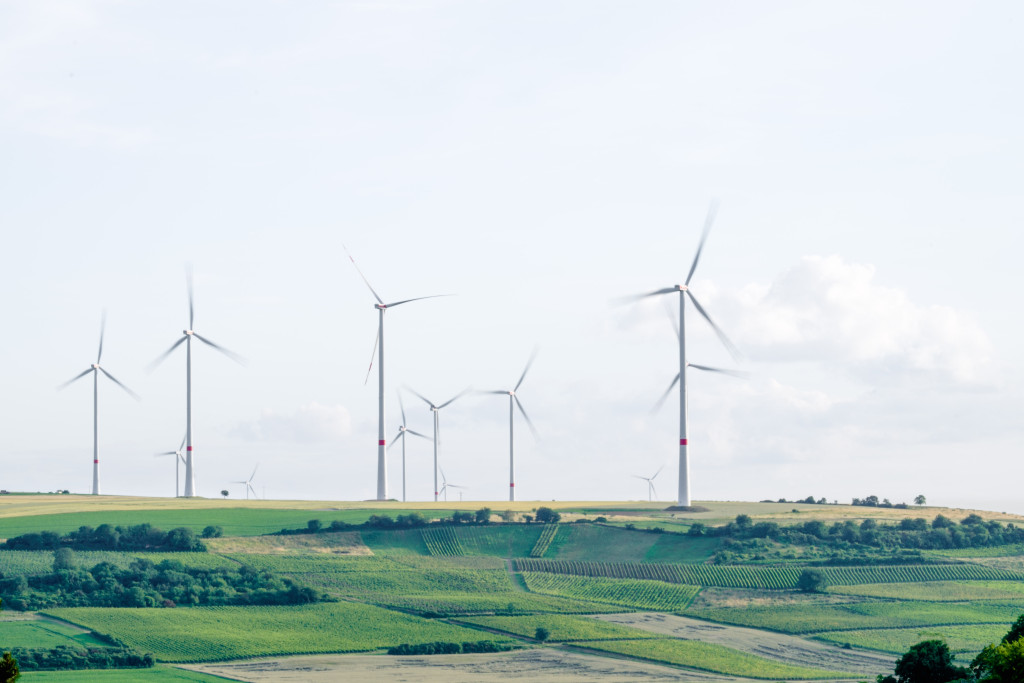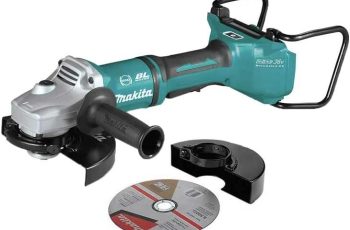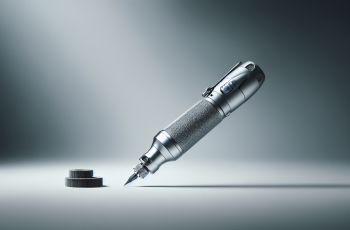When using a die grinder, it is important to not only consider the efficiency and effectiveness of the tool, but also its impact on the environment. This article explores the environmental considerations for die grinder use, highlighting the potential hazards and offering practical tips on how to minimize the negative effects. By being mindful of the environment while using this powerful tool, you can contribute to a cleaner and safer work environment for both yourself and future generations.
Noise Pollution

Effects of noise pollution
Excessive noise generated from die grinder use can have negative effects on both humans and the environment. For individuals operating the die grinder, prolonged exposure to high noise levels can lead to hearing loss, stress, and other health issues. It can also disrupt communication and concentration, leading to decreased productivity and increased risk of accidents. In the environment, noise pollution can disturb wildlife, causing them to alter their behavior and disrupt natural ecosystems.
Regulations and guidelines for noise control
To mitigate the impact of noise pollution, various regulations and guidelines have been put in place. These may include limits on noise emissions, especially in residential areas or areas with sensitive wildlife. Employers are often required to provide hearing protection for workers exposed to high noise levels. Additionally, organizations such as the Occupational Safety and Health Administration (OSHA) provide guidelines and standards for controlling noise levels in industrial and construction settings.
Reducing noise pollution
There are several measures that can be taken to reduce noise pollution from die grinder use. Employers can invest in quieter equipment or implement engineering controls such as enclosures or sound barriers. Regular equipment maintenance can also help minimize noise levels. Additionally, workers should wear appropriate hearing protection, such as earmuffs or earplugs, to reduce their own exposure to excessive noise. Proper training and education on the risks and prevention of noise pollution are also crucial in promoting a noise-free and healthy working environment.
Air Pollution
Sources of air pollution from die grinder use
Die grinder use can contribute to air pollution through the release of airborne particles and gases. During operation, fine particulate matter and metal dust can be generated, especially when working with materials such as metal or concrete. These particles can contaminate the air and pose health risks when inhaled. In addition, the combustion of fossil fuels, such as gasoline or diesel, in the die grinder engine can release pollutants, including carbon monoxide (CO) and nitrogen oxides (NOx), which contribute to air pollution.
Health effects of air pollution
The air pollution resulting from die grinder use can have severe health effects. Inhalation of fine particulate matter can penetrate deep into the respiratory system, causing respiratory issues, allergies, and even cardiovascular problems. Exposure to toxic gases, such as carbon monoxide, can lead to headaches, dizziness, and in extreme cases, carbon monoxide poisoning. Prolonged exposure to air pollution can also contribute to the development of chronic respiratory diseases and impair lung function.
Regulations and guidelines for air quality
Regulations and guidelines have been established to address air pollution and ensure air quality standards are met. These regulations may include limits on emissions from industrial equipment, such as die grinders, as well as standards for ambient air quality. Government agencies, such as the Environmental Protection Agency (EPA), enforce these regulations and set guidelines for emissions control, air monitoring, and pollution prevention.
Methods to reduce air pollution
Several methods can be employed to reduce air pollution from die grinder use. Regular maintenance of equipment is essential to ensure optimal performance and minimize emissions. Using advanced filtration systems, such as high-efficiency particulate air (HEPA) filters, can capture airborne particles and improve air quality in the workplace. Employing electric or battery-operated die grinders can also reduce emissions compared to those powered by fossil fuels. Furthermore, proper ventilation systems can help remove contaminants from the air and improve indoor air quality.
Dust and Particulate Matter
Impact of dust and particulate matter on the environment
The generation of dust and particulate matter during die grinder use can have detrimental effects on the environment. When released into the air, these particles can contribute to the formation of smog, reducing visibility and degrading air quality. They can also settle on surrounding surfaces, leading to soil and water contamination. In sensitive ecosystems, excessive dust and particulate matter can disrupt the balance of plant and animal life, affecting their health and overall ecosystem function.
Health risks associated with exposure to dust and particulate matter
Exposure to dust and particulate matter generated by die grinders can pose serious health risks. Fine particles can be inhaled and penetrate deep into the respiratory system, causing or exacerbating respiratory conditions such as asthma and bronchitis. Prolonged exposure to certain types of particulate matter, such as silica dust, can lead to lung diseases such as silicosis, which is a chronic and irreversible condition. Additionally, the presence of metal particles in the air can pose a risk of heavy metal toxicity if ingested or inhaled.
Regulations and guidelines for dust control
Regulations and guidelines have been established to control and minimize the release of dust and particulate matter. These may include requirements for effective dust control measures, such as the use of containment systems or wet methods during grinding operations. Employers are typically responsible for implementing dust control measures and providing appropriate personal protective equipment (PPE) to workers. Organizations like OSHA provide guidelines and standards to help ensure proper dust control in the workplace.
Preventing and controlling dust and particulate matter
To prevent and control dust and particulate matter, several measures can be implemented during die grinder use. Wet grinding methods can be employed to minimize dust generation by adding water or other suitable fluids to the grinding process. Local exhaust ventilation systems can capture and remove airborne particles at the source, preventing their dispersion into the air. Using dust collection systems, such as vacuum attachments, can also help capture and contain particles, reducing their spread and potential health risks.
Energy Efficiency
Importance of energy efficiency in die grinder use
Energy efficiency is of paramount importance when using die grinders. By improving energy efficiency, not only can operating costs be reduced, but also the overall environmental impact can be minimized. Less energy consumption means a reduced carbon footprint and decreased reliance on fossil fuels for electricity generation. Additionally, energy-efficient die grinders can contribute to a more sustainable approach to manufacturing and industrial processes.
Ways to improve energy efficiency
There are several ways to improve energy efficiency when using die grinders. Choosing high-efficiency models and considering power management features, such as variable speed settings, can help reduce energy consumption. Proper maintenance, including regular cleaning and lubrication, ensures optimal performance and energy efficiency. Utilizing smart power management systems, such as automatic shutdown or standby modes, can further conserve energy by minimizing idle power consumption. Additionally, employee training on energy-saving practices and awareness campaigns within the workplace can promote a culture of energy efficiency and sustainability.
Benefits of energy-saving measures
Implementing energy-saving measures in die grinder use yields numerous benefits. Firstly, reduced energy consumption translates to cost savings for businesses, as lower electricity bills contribute to overall operational efficiency. Secondly, energy-saving measures contribute to a cleaner environment by reducing greenhouse gas emissions associated with energy generation. By minimizing the environmental impact, businesses can enhance their reputation, attract environmentally conscious customers, and contribute to a more sustainable future for all.
Waste Management
Types of waste generated from die grinder use
Die grinder use generates various types of waste that require proper management and disposal. Metal shavings, dust, and other debris accumulate during the grinding process. Additionally, worn-out or damaged grinder parts, such as discs or wheels, may need to be disposed of. Used lubricants and coolants may also need to be treated as hazardous waste due to their potential environmental impact. It is essential to identify and handle each type of waste appropriately to minimize its impact on the environment.
Proper disposal methods for different types of waste
Proper disposal methods should be followed for different types of waste generated from die grinder use. Metal shavings and other debris can often be recycled or disposed of in designated waste bins for metal or general waste, depending on their composition. Worn-out grinder parts may need to be properly segregated and disposed of as scrap metal. Lubricants and coolants should be collected and treated as hazardous waste, following local regulations and guidelines for disposal. It is vital to work with reputable waste management companies to ensure the proper handling and disposal of these materials.

Recycling options and initiatives
Recycling initiatives can play an essential role in reducing waste from die grinder use. Metal shavings and worn-out grinder parts can often be recycled, providing a valuable source of raw materials for manufacturing processes. Working with recycling companies or implementing on-site recycling programs can help divert waste from landfills and promote a circular economy. Additionally, exploring opportunities for the recycling or reclamation of lubricants and coolants can further minimize the environmental impact of waste generated from die grinder use.
Reducing waste generation
To reduce waste generation from die grinder use, several strategies can be employed. Regular maintenance and inspection of die grinders can help identify and address potential issues before they cause excessive waste generation. Optimizing grinding processes, such as selecting appropriate abrasives or adjusting cutting parameters, can minimize the amount of material removed and reduce waste. Implementing lean manufacturing principles, such as continuous improvement and waste reduction initiatives, can also help foster a culture of waste minimization and resource efficiency.
Water Pollution
Sources of water pollution from die grinder use
Water pollution can occur during die grinder use through several sources. Improper disposal of waste materials, such as metal shavings or used lubricants, can lead to the contamination of water bodies if they enter the drainage system. Inadequate management of coolant or cutting fluids can also result in the release of harmful chemicals into water sources. Runoff from grinding operations can carry suspended solids, including dust, into nearby waterways, further contributing to water pollution.
Effects of water pollution on ecosystems
Water pollution resulting from die grinder use can have severe consequences on ecosystems. Contaminants released into water bodies can negatively impact aquatic life, leading to reduced biodiversity and impaired ecosystem functioning. Harmful chemicals can accumulate in the food chain, potentially affecting not only aquatic organisms but also humans who rely on these water sources for drinking or recreation. Additionally, excessive amounts of suspended solids in water can disrupt the balance of aquatic ecosystems, affecting the health and survival of plants and animals.
Regulations and guidelines for water quality
Regulations and guidelines have been established to protect water quality and prevent water pollution. These regulations may include standards for acceptable levels of pollutants in water bodies, as well as requirements for the proper management and disposal of hazardous substances. Agencies such as the EPA and local environmental authorities enforce these regulations and provide guidelines on best practices for water pollution prevention and control.
Preventing water pollution
Preventing water pollution from die grinder use requires implementing proper management and control measures. Effective containment systems should be in place to capture and contain any waste materials generated during grinding operations. Proper disposal methods should be followed, ensuring that waste does not enter the drainage system or nearby water sources. Implementing spill prevention measures, such as secondary containment systems and regular maintenance of coolant or cutting fluid systems, can minimize the risk of accidental releases. Regular monitoring and inspection of equipment and processes can help identify and address potential sources of water pollution.
Chemical Usage and Exposure
Types of chemicals used with die grinders
Die grinders may involve the use of various chemicals, including lubricants, coolants, and cleaning agents. Lubricants are commonly used to reduce friction and heat generated during grinding, while coolants help dissipate heat and extend tool life. Cleaning agents can be employed to remove debris, contaminants, or residues from the grinding surface. It is essential to be aware of the types of chemicals used and their potential impacts on human health and the environment.
Health risks associated with chemical exposure
Exposure to chemicals used with die grinders can pose significant health risks. Some lubricants and coolants may contain hazardous substances such as toxic metals, solvents, or additives that can be harmful if inhaled or absorbed through the skin. Prolonged or repeated exposure to these chemicals can lead to various health issues, including skin irritation, respiratory problems, or systemic toxicity. Additionally, improper handling or storage of these chemicals can increase the risk of accidents, such as spills or fires, further endangering workers and the environment.

Safe handling and storage practices
Safe handling and storage practices are critical when dealing with chemicals used with die grinders. Workers should receive appropriate training on the safe use and handling of these chemicals, including the use of personal protective equipment (PPE) such as gloves, goggles, or respirators. Proper ventilation should be ensured in areas where chemicals are used, stored, or handled to minimize exposure. Chemicals should be stored in designated areas, away from ignition sources, and according to manufacturer recommendations. Spill response plans and containment measures should be in place to mitigate the risks of chemical accidents and minimize environmental contamination.
Using alternative chemicals
Whenever possible, it is advisable to explore and consider the use of alternative chemicals that are less hazardous or have a lower environmental impact. Switching to eco-friendly lubricants and coolants can reduce the potential risks associated with chemical exposure and contribute to a safer and healthier working environment. It is essential to consult with suppliers, manufacturers, or industry experts to identify and evaluate alternative chemical options suitable for specific die grinder applications. Implementing these alternatives may require changes in processes, equipment compatibility, and employee training, but the benefits in terms of reduced chemical hazards and environmental sustainability are worthwhile.
Sustainable Practices
Implementing sustainable practices in die grinder use
Implementing sustainable practices in die grinder use involves taking a holistic approach that considers environmental, social, and economic aspects. This can include adopting environmentally friendly technologies, reducing waste generation and resource consumption, promoting employee engagement, and implementing responsible supply chain management. The overall aim is to minimize the environmental impact of die grinder use while maximizing operational efficiency and long-term sustainability.
Choosing environmentally friendly abrasive materials
One way to promote sustainability in die grinder use is to choose abrasive materials that have a reduced environmental impact. Opting for abrasives made from recycled materials or those that are easily recyclable can help conserve resources and minimize waste generation. Additionally, selecting abrasives that have lower toxicity levels or emissions can contribute to a healthier working environment and reduce the overall environmental footprint of die grinder operations.
Promoting a culture of environmental responsibility
Incorporating a culture of environmental responsibility within the workplace is essential for sustainable die grinder use. This can involve educating employees about the environmental impacts of their work and providing training on sustainable practices. Encouraging employee engagement through initiatives such as suggestion programs or green teams can generate innovative ideas and foster a sense of ownership in environmental stewardship. Recognizing and rewarding environmentally responsible behavior can further reinforce positive sustainable practices.
Assessing and improving environmental performance
Regularly assessing and improving environmental performance is critical to ensure the effectiveness of sustainable practices in die grinder use. Monitoring energy consumption, waste generation, and emissions can help identify areas for improvement. Setting measurable goals and targets, such as reducing energy consumption or increasing recycling rates, can drive continuous improvement. Regular audits and performance evaluations can provide valuable insight into the effectiveness of sustainable practices and help identify opportunities for further enhancement.
Emissions Control
Emissions from die grinder use
Emissions from die grinder use primarily result from the combustion of fossil fuels, such as gasoline or diesel, in the engine. These emissions can include gases such as carbon monoxide (CO) and nitrogen oxides (NOx), as well as particulate matter. The release of these pollutants into the atmosphere contributes to air pollution, climate change, and negative health impacts.
Impact of emissions on air quality and climate change
The emissions generated by die grinder use have significant impacts on both air quality and climate change. Pollutants such as carbon monoxide can contribute to the formation of ground-level ozone, a major component of smog and a potent respiratory irritant. Nitrogen oxides are precursors to the formation of both ground-level ozone and fine particulate matter, both of which have adverse health effects. Furthermore, the release of greenhouse gases, such as carbon dioxide (CO2), during combustion contributes to climate change, leading to global warming and its associated environmental, social, and economic consequences.
Technology and strategies to reduce emissions
Numerous technologies and strategies can be employed to reduce emissions from die grinder use. Upgrading to more fuel-efficient die grinders or transitioning to electric or battery-powered models can help reduce emissions associated with combustion. Regular maintenance, including tuning the engine and replacing worn-out parts, can ensure optimal combustion efficiency and minimize emissions. Additionally, implementing emissions control technologies, such as catalytic converters or diesel particulate filters, can effectively reduce the release of harmful pollutants. It is essential to stay informed about emerging technologies and industry best practices to continually improve emissions control.
Benefits of emissions control
Investing in emissions control measures for die grinder use yields several benefits. Firstly, reductions in harmful emissions lead to improved air quality, which positively impacts both human health and the environment. Cleaner air translates to reduced respiratory issues, allergies, and cardiovascular problems for individuals exposed to die grinder emissions. Secondly, emissions control contributes to the global effort to mitigate climate change by reducing greenhouse gas emissions that drive global warming. By adopting emissions control measures, businesses can demonstrate environmental responsibility, enhance their reputation, and align with sustainable development goals.
Impact on Local Communities
Effects on the quality of life for nearby residents
Die grinder use can have a significant impact on the quality of life for nearby residents. Excessive noise generated during grinding operations can disturb the peace and tranquility of residential areas, leading to annoyance, stress, and sleep disturbances. Air pollution resulting from die grinder emissions can also affect the air quality in nearby communities, increasing the risk of respiratory problems and other health issues for residents. Furthermore, the release of dust, particulate matter, and potentially hazardous substances can contaminate nearby properties, affecting the overall livability of the area.
Community engagement and consultation
Engaging and consulting with local communities is crucial when undertaking die grinder operations. This involves open and transparent communication with residents to ensure they are informed about the nature of the work, potential environmental impacts, and mitigation measures in place. Early engagement and consultation allow for the exchange of information, identification of concerns or issues, and the development of mutually beneficial strategies. Involving community members in decision-making processes and seeking their input can build trust, collaboration, and a sense of ownership in addressing environmental considerations related to die grinder use.
Addressing concerns and mitigating impacts
Addressing community concerns and mitigating the impacts of die grinder use requires proactive measures. Implementing appropriate mitigation techniques, such as noise barriers or setbacks, can help reduce the noise impact on neighboring properties. Employing emissions control technologies can minimize air pollution and its associated health risks for residents. Effective dust control measures, such as dust suppression systems or regular cleaning of surfaces, can prevent particulate matter from settling on nearby properties. Regular monitoring and community feedback mechanisms can provide valuable information to continually improve mitigation strategies and address any ongoing concerns.



